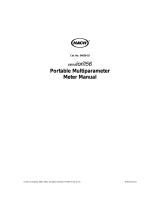CMA ML75m is a digital Dissolved Oxygen sensor that accurately measures the concentration of dissolved oxygen in water samples, making it ideal for various applications such as monitoring water quality, conducting scientific experiments, and educational purposes. With its automatic temperature compensation, the sensor delivers precise readings even in fluctuating temperature conditions. The user-friendly interface allows for easy calibration and data collection, while the durable design ensures long-lasting performance.
CMA ML75m is a digital Dissolved Oxygen sensor that accurately measures the concentration of dissolved oxygen in water samples, making it ideal for various applications such as monitoring water quality, conducting scientific experiments, and educational purposes. With its automatic temperature compensation, the sensor delivers precise readings even in fluctuating temperature conditions. The user-friendly interface allows for easy calibration and data collection, while the durable design ensures long-lasting performance.












-
 1
1
-
 2
2
-
 3
3
-
 4
4
-
 5
5
-
 6
6
-
 7
7
-
 8
8
-
 9
9
-
 10
10
-
 11
11
-
 12
12
CMA ML75m is a digital Dissolved Oxygen sensor that accurately measures the concentration of dissolved oxygen in water samples, making it ideal for various applications such as monitoring water quality, conducting scientific experiments, and educational purposes. With its automatic temperature compensation, the sensor delivers precise readings even in fluctuating temperature conditions. The user-friendly interface allows for easy calibration and data collection, while the durable design ensures long-lasting performance.
Ask a question and I''ll find the answer in the document
Finding information in a document is now easier with AI
Related papers
Other documents
-
Extech Instruments DO700 User manual
-
YSI 5239 Owner's manual
-
 Hach Sension 156 User manual
Hach Sension 156 User manual
-
 Hach sension8 User manual
Hach sension8 User manual
-
Extech Instruments DO600 User manual
-
EUTECH INSTRUMENTS WD-35414-20 Owner's manual
-
Omega DOB21 Owner's manual
-
YSI 50 Dissolved Oxygen Meter Owner's manual
-
Oakton DO 700 - REV 3 Owner's manual
-
YSI 56 Dissolved Oxygen Monitor Owner's manual













